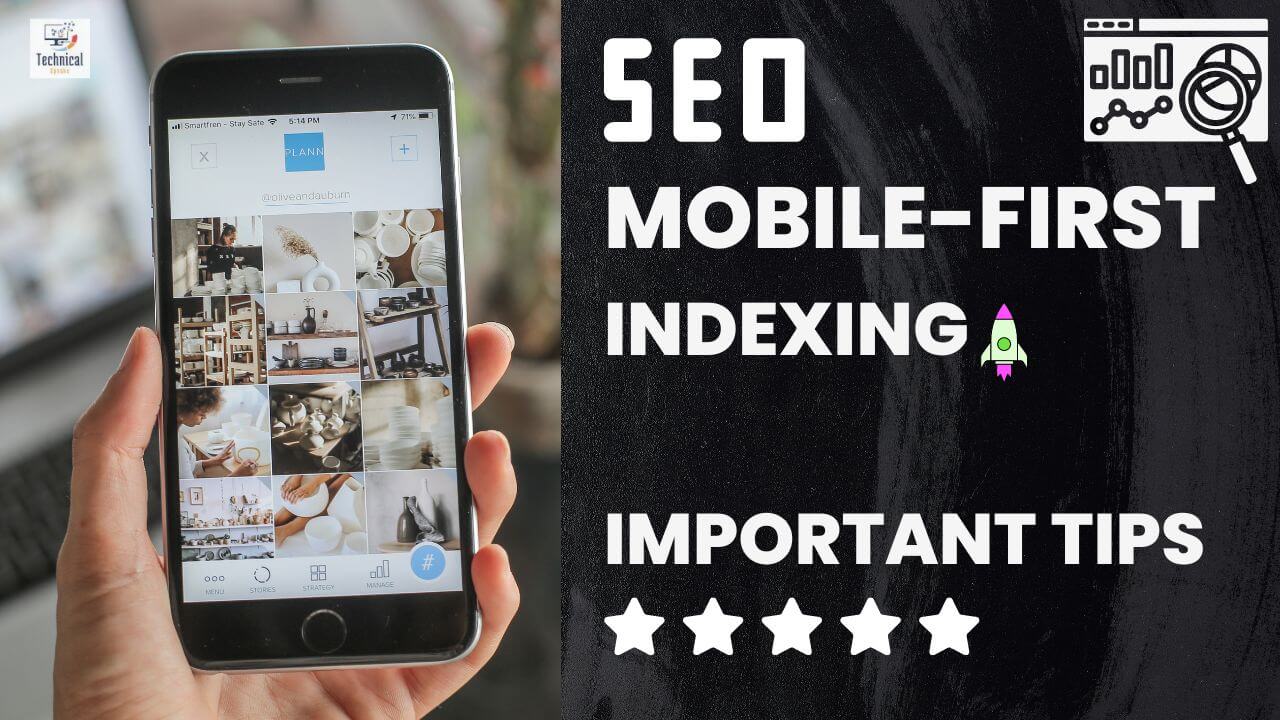In the digital age, most people access the internet via smartphones instead of desktop computers. According to Statista, mobile devices account for over 60% of all web traffic globally. Google adopted mobile-first indexing in response to this big shift, which means that it primarily uses mobile versions to index and rank websites.
As a result, mobile optimization is now necessary rather than optional. If your website is not responsive, you could lose sales, clients, and visibility.
In this blog post, we’ll discuss eight essential mobile-first indexing factors to make sure your website works better, provides a smooth user experience, and draws in mobile visitors.
1. Verify the responsiveness of your website.
The foundation of mobile-first indexing is responsive design. A responsive website automatically adjusts its layout to fit different screen sizes, whether on a desktop, tablet, or smartphone.
The significance of
- Google claims that responsive design is the best approach for mobile optimization.
- It eliminates the need for separate URLs for desktop and mobile devices.
- Users can easily switch between devices.
Useful Guidance:
- Use fluid grids, flexible images, and CSS media queries.
- To test your website, use Google’s Mobile-Friendly Test Tool.
- Avoid fixed-width layouts because they distort on small screens.
2. Make Your Website Faster
Speed is crucial for mobile-first indexing. Because mobile users expect pages to load quickly, delays can cost you both traffic and conversions.
The significance of
- 53% of mobile visitors will leave a page if it takes more than three seconds to load.
- Loading speed is one of Google’s Core Web Vitals that affects rankings.
- A slow website increases bounce rates and decreases user satisfaction.
Useful Guidance:
- Photos can be made smaller without compromising quality.
- Utilize a cache and a content delivery network (CDN).
- Cut down on the number of JavaScript and CSS files.
- AMP (Accelerated Mobile Pages) should be enabled for better performance.
3. Keep Desktop and Mobile Content Consistent
One of the most prevalent misconceptions is that mobile devices display less content than desktop computers. Because Google indexes your mobile version first, missing content could hurt your rankings.
The significance of
- If mobile content is cropped, Google may miss crucial keywords.
- Inconsistent content undermines user trust and brand authority.
- Complete information guarantees higher engagement and conversions.
Useful Guidance:
- Verify that the text, images, and videos are the same in both versions.
- Don’t use “read more” buttons to hide important information.
- Use foldable menus or tabs in place of removing content.
4. Make Images and Media Mobile-Friendly
Even though they are important, poorly optimized images can cause your website to load slowly and disrupt mobile-first indexing.
The significance of
- Large, uncompressed images cause pages to load more slowly.
- Properly optimized visuals improve the user experience.
- Alt text and structured data improve accessibility and SEO.
Useful Guidance:
- Use next-generation formats, such as WebP, for images.
- Provide an alt text description for every image.
- Use responsive image attributes (srcset) for different screen sizes.
- Videos must be compressed, and adaptive streaming must be enabled.
5. Improve Mobile Navigation & User Experience (UX)
Users on desktops and mobile devices interact differently. Complicated menus or tiny clickable elements can annoy users and lower engagement.
The significance of
- An intuitive navigation system improves dwell time.
- Easy-to-use menus have lower bounce rates.
- Google rewards websites with better user experiences.
Useful Guidance:
- Use simple menus that have a clear hierarchy.
- Ensure that call-to-actions (CTAs) and buttons are large enough to be easily touched.
- Use sticky navigation bars for ease of use.
- Test the design on different screen sizes to avoid overlap.
6. Verify the accuracy of structured data markup
Structured data, sometimes referred to as schema markup, helps Google understand your website. If your desktop version uses schema and your mobile version does not, you risk losing rich snippets in search results.
The significance of
- Rich snippets like reviews, FAQs, and stars increase click-through rates.
- Structured data is more likely to be included in snippets.
- Google requires that the schema be the same for both versions.
Useful Guidance:
- Use tools like Google’s Rich Results Test to confirm markup.
- Make sure the two versions have the same schema (reviews, events, products, and FAQs).
- Keep your structured data current and accurate.
7. Avoid invasive pop-ups and interstitials.
Users may become irritated when intrusive pop-ups block content because mobile screens are smaller. Google penalizes websites that use distracting interstitials on mobile devices.
The significance of
- Intruding pop-ups have a detrimental effect on the user experience.
- Google devalues mobile websites with aggressive interstitials.
- Irritated users are less likely to return or convert.
Useful Guidance:
- Use non-intrusive banners in place of full-screen pop-ups.
- Make sure that crucial information is not obscured by pop-ups.
- To make closing easier, have a visible “X” button.
- Use exit-intent or scroll-based triggers for pop-ups.
8. Monitor Mobile Performance with Google Tools
The process of optimization is ongoing. Regular monitoring helps identify problems early and improves mobile SEO performance.
The significance of
- Mobile performance affects crawlability and rankings.
- Issues like sluggish pages or broken links might go unnoticed without tracking.
- Data-driven improvements guarantee long-term success.
Useful Guidance:
- Use Google Search Console to see mobile usability reports.
- Keep an eye on important web metrics with Google PageSpeed Insights.
- Analyze mobile traffic trends with Google Analytics 4.
- Use A/B testing to evaluate modifications made to the mobile design.
Final thoughts
Optimizing for mobile-first indexing, which is here to stay, is now crucial. Businesses run the risk of losing clients, traffic, and visibility if they don’t adjust. Prioritizing responsive design, speed, consistent content, optimized visuals, structured data, and seamless user experiences will help you stay ahead of the competition in 2025 and beyond.
In conclusion, the eight essential components of mobile-first indexing are as follows:
- Creating Responsively
- Optimization of Website Speed
- Content Consistency Across Versions
- Optimization of Images and Media
- Mobile Navigation & UX
- Structured Data Markup
- Avoid invasive pop-ups.
- Monitor Your Mobile Device’s Performance
In addition to improving your rankings, implementing these strategies will increase user satisfaction, conversions, and sales. The future of the internet is mobile, so make sure your website is responsive.








